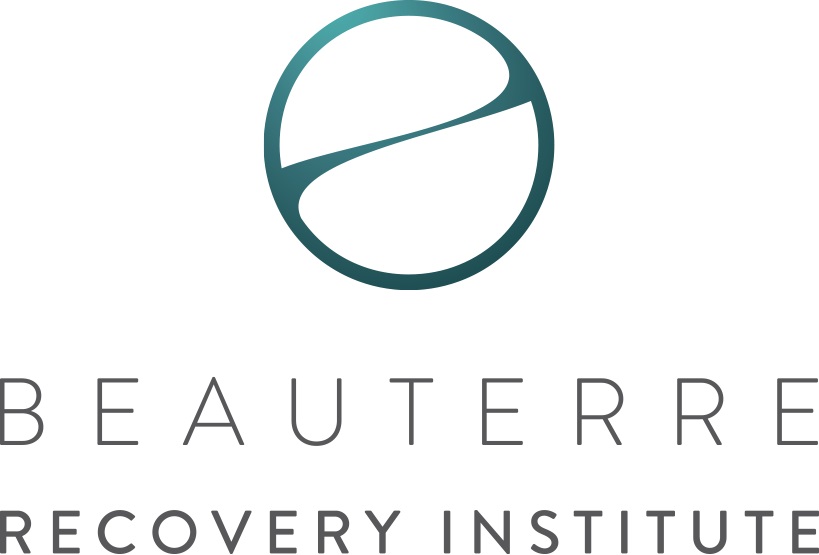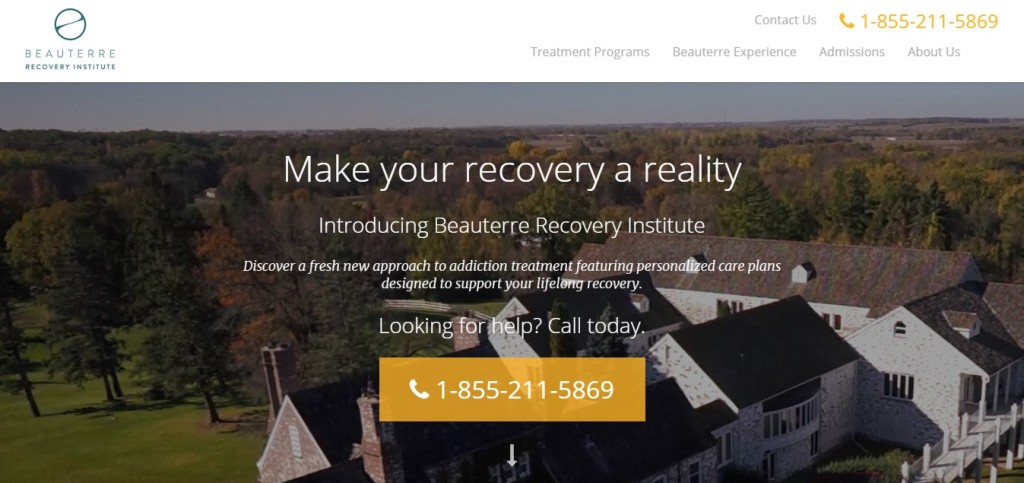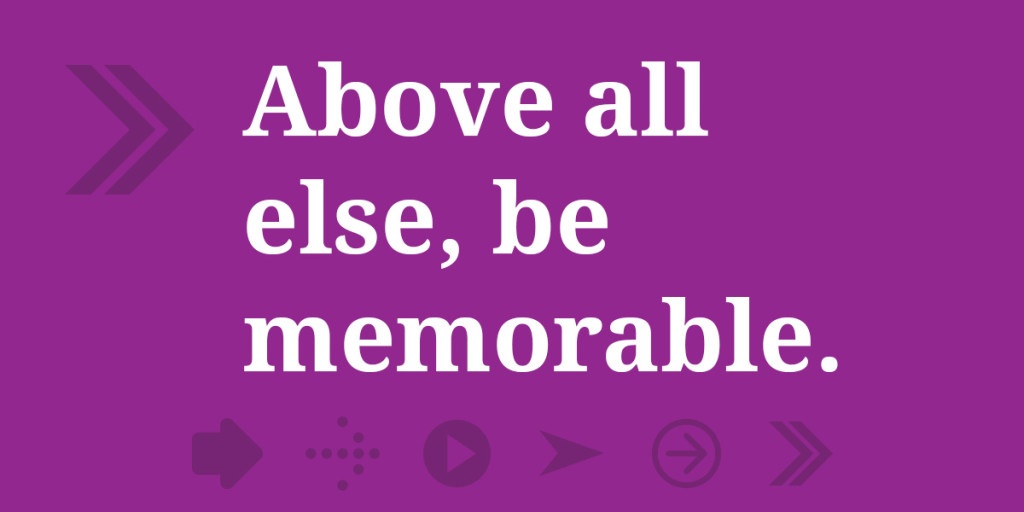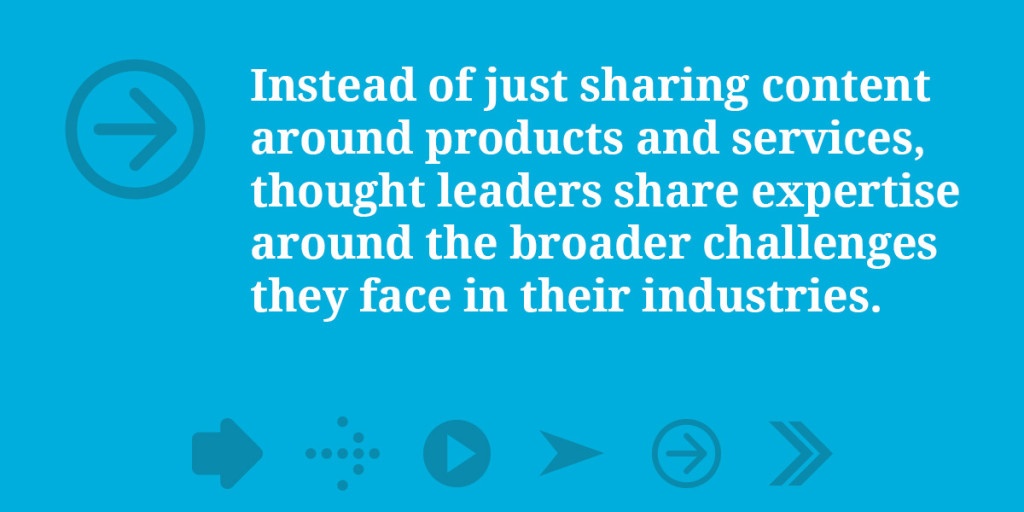Note – This blog was originally published on June 29, 2016 and has proven to be one of our most popular blogs. The points and message of this original blog remain true and we felt it was appropriate to share it again on Martin Luther King Jr. Day.
Communication was Dr. Martin Luther King Jr.’s forte. He is known as one of America’s most influential speakers, even 52 years after he gave his iconic “I Have a Dream…” speech.
During this speech, King captivated his audience with poetic language and thought-provoking ideas. He painted a picture of how life could be instead of focusing on the negative aspects of how life was.
Today’s communicators can learn several public speaking lessons from King’s famous speech, including using positive language, narrowing your focus and using your words to create a visual description.
Using Positive Language Makes Your Communication Clear
Even though violence was common around the country, King advocated the positive outcomes of an equal society, gained through dignity and discipline.
He didn’t accuse others of committing wrongs or encourage people to act violently. King used positive language to make his point of the benefits of taking the high road. Positive language is powerful because it makes your message absolutely clear to your audience.
The Best Communication Has a Narrow Focus
King had one goal with his speech: to encourage public opinion in favor of creating an equal society for all races. Every sentence in his speech works toward this goal by examining positive outcomes of eliminating racism.
By narrowing the focus of a speech, you will stay on point and give your audience the most information about one specific topic.
Use Common Language in Your Communication to Relate to Your Audience
King’s speech was written for the average American, so he used plain language to deliver a clear message that was understood by everyone.
The lesson here is to tailor your speech to your audience.
If you’re presenting to high-level professionals, their common language is bigger, more complex words that are used in their careers. This language will make sense to them and help you gain credibility as a speaker.
However, if you’re presenting to an eighth-grade class, their everyday language is simple words that will be easily understood.
Depending on your audience, adjust your language to ensure your listeners get the most out of your speech.
Use Communication to Paint Pictures with Words
The reason King’s speech was so vivid is because he included colorful language and used his words to paint a picture in the minds of listeners. King used metaphors throughout the entire speech, bringing simple sentences to life. A few examples include:
- Comparing the Declaration of Independence, in which every American is guaranteed the unalienable rights of life, liberty and the pursuit of happiness, to a bad check that African-American’s attempted to cash, but was returned due to insufficient funds.
- Comparing segregation to a dark and desolate valley, and comparing racial justice to a sunlit path.
- Comparing the desire for freedom as a thirst, and comparing the road of violent actions to “drinking from the cup of bitterness and hatred.”
A well-crafted comparison can liven up your presentation and help your audience understand the point you’re trying to make.
These are just a few of the communication lessons that Martin Luther King Jr. taught us through his memorable speech. Are there others you can think of?
If you’re interested in honing your public speaking skills when talking with the media, contact us.
It’s been a long-standing trend to note how public relations (PR) has been dead for years. Literally for years. Over the past few months, the topic has popped up again more frequently when mixed in with concerns about the validity of news from traditional media outlets and the abundance of user-generated content online today.

Skipping to the punchline, no PR is not dead. If you believe that PR is dead, then you have a misperception of what PR can encompass. For many years, the terms media relations and PR have been used interchangeably, though they really never should be. A narrow definition of PR that strictly focuses on the (important) skill of defining story angles and obtaining placement in major media outlets doesn’t capture the overall function which is:
The business of inducing the public to have understanding for and goodwill toward a person, firm, or institution – Merriam Webster Dictionary
Public relations is a strategic communication process that builds mutually beneficial relationships between organizations and their publics. – Public Relations Society of America
Nowhere in there is a mandate to use traditional media channels. The goal of public relations is communicating and establishing strong relationships. This is otherwise known as reputation. Each organization has a reputation and it shapes every interaction that a prospective customer, partner, or employee has with that entity. If you’re not working to maintain and positively enhance that reputation you’re ignoring a primary factor on bottom-line success.
When talking about PR, the following efforts all play a role in integrated success:
- Audience assessment and positioning
- Identifying your target audience and what is most important to them is an essential first step. Without a clear understanding of what you want them to do, it is a waste of time to throw tactics out in the marketplace. What is it that you believe the target community needs to know? Where does your organization fit in providing meaningful value to that audience? Where are the gaps in connecting those two positions?
- Messaging
- Based on the audience assessment, having specific messaging that speaks to them and provides the “so what” factor that is meaningful to them is essential. Without quality messaging that connects, everything else will fail.
- Content strategy and development
- With a strong position and messaging established, the focus can shift to outbound efforts to engage and cultivate the relationship your organization seeks to build. Start with a strategy on how to produce the content needed to amplify the voice of the organization. Tailored pieces of content for Earned (media relations), Owned (social media, blog, website) and paid (advertising, sponsorships) allow you to make the most of public relations efforts generating both strong reputational benefits and bottom-line growth.
- Media relations (online/offline)
- Storytelling and securing coverage remains a powerful tool in helping define and enhance the reputation of any organization. The change is that the potential for earned coverage has expanded dramatically with the expansion of online outlets. The view that media relations has gone away is foolish. It has evolved.
- Social media
- Owned content such as social media creates additional, tailored channels where organizations can speak directly with their community of customers and prospects. Messaging and tailored calls to action can deepen the relationship between the organization and its community. Earned coverage through media relations only enhances the value of social with quality links and content that reach the audience on their preferred social channel.
- Corporate social responsibility programs, community relations, sponsorships
- Each aspect of an organization makes an impact on how the broader community will feel about your brand. Quality reputations are invaluable in maintaining public trust. Think of the Mayo Clinic brand, which has been thoughtfully associated with quality care for decades as compared to fly-by-night care providers seeking to capitalize on the billions spent in healthcare. Every interaction makes an impact. Every online impression also makes an impact- positive or negative.
To maximize the impact of PR, these programs work together to build the mutually beneficial relationships that all organizations seek. Once a desired brand position is defined, every action whether online or offline has an impact on how that organizational brand is perceived. An ideal integrated program features offline activities (community events, sponsorships, traditional media placements) that spark interest in the organization. Those efforts can be funneled to drive interested audiences online to take the next step in engagement with your brand (landing page with a call to action, social media engagement/follow to learn more, downloading content that helps them fill a need) and cultivating a positive reputation.
PR is not dead but alive and well, actually thriving in the digital era. Think of every opportunity, online or offline, to enhance the reputation of your organization and build digital influence with key audiences.
To see examples of how integrated offline campaigns can drive results in the digital world, please contact us by filling out the form below.
Entering the PR industry can be intimidating, especially for recent college grads. After working in public relations for two years, I’ve learned more on the job than I ever could in a classroom. These three tips for entry-level public relations professionals will help you build you professional knowledge and make a good impression in your first career.
Work on improving your writing
Whether you’re a wordsmith or not, writing is a staple of communications careers. You can always become a better writer, which is why it’s important to continue working on improving your writing skills.
Learn new words; keep up with AP Style; and practice writing whenever you get a chance. When your boss gives you feedback, listen so you don’t make the same mistake twice!
Always build relationships
Public relations is a relationship-driven industry. The power of relationships is infinite, whether it’s collaborating with media, connecting with coworkers or meeting industry peers.
Having a connection with media means your story is more likely to get covered, or at least get looked at. Having camaraderie with coworkers means they are more likely to help you out when you get hit with a last-minute deadline. Meeting industry peers not only gives you support in your career, but it also opens the door to new opportunities.
I’ve seen many people find job offers simply by knowing someone in their industry’s professional organization. Joining the Minnesota Public Relations Society of America has been a blast because I meet people from so many backgrounds – entry-level to senior management, corporate communications to agency life.
Get involved with a professional organization, meet new people and always build your relationships.
Keep your drive to learn
The most successful people continue learning well after school is out. Take advantage of the wealth of knowledge around you at work. Offer to take a senior-level team member to lunch so you can ask how they got where they are and what advice they have.
Browse websites such as local marketing agencies, professional organizations and industry trade outlets to explore new topics and hone your skills. The PR industry changes as quickly as technology advances, so continued learning is essential to success.
Improving your writing, building relationships and keeping your drive to learn will help you gain as much experience as you can in your first public relations career.
Do you have a tip that helped you in your PR job? Share it with us @RisdallPR.
It is 2 p.m. on a gorgeous summer afternoon.
Half of the agency is already gone, your clients are checked out, and a rooftop happy hour is calling your name.
Why bother being productive?
Productivity is a matter of professionalism even at the most relaxed agencies.
You’d never bill a client for time you did not work, so why is your agency any different?
Your employer is your No. 1 client. Respect its time.
So resist the temptation to troll Tumblr GIF blogs for the next three hours. There are several productive things you can do on a Friday afternoon even if you are mentally spent.
1) Recap
A surprising amount of agencies do not keep a running toll of what their employees are doing. Sure, billable time is tracked, but does your boss really know when you go out of your way for a client?
Compile a high-level overview of your accomplishments for the week. Sending your boss weekly updates is a great way to reinforce trust and can make future raise/promotion talks significantly easier.
If you have one or two major clients, consider sending progress updates to account managers (or even the clients themselves.) Most clients love knowing that you’re working for them even when most of the world has scampered off to happy hour.
2) Plan
Use the waning Friday hours to get ahead on next week’s administrative tasks.
Organize your cube, throw out that hoard of Diet Coke cans, and clean up your desktop.
Next, create a short list of the most important things that you want to accomplisher before noon on Monday – starting with the most tedious. This will ensure that you are set up to be maximally productive when you skip back into the office next week.
3) Strategize
Make a list of 3 awesome and 3 horrible (or tedious) things that happened this week.
Ask yourself how you can maximize the occurrence of awesome in your work life and minimize the tedious moments.
- Are there things that can be done more efficiently?
- Do you have a skills gap?
- Can you prepare better for a particular set of meetings next time?
Post your game plan for next week right by your computer monitor so you can refer back to it on Monday morning.
4) Help
Look around – who is left at the agency? Ask them if they need any help on their projects, even if it’s with a menial task.
Even if they end up declining the offer, you’ve just built up some goodwill points that may come in handy later.
5) Pitch
If there’s truly no pressing work left to do, think of ways that you can pitch new strategies to clients or your agency.
- Are there elements missing in a particular social media campaign?
- Should your agency be on Pinterest or Vine?
- Is your client maximizing their advertising spend?
Even if your ideas are for an area outside of your expertise, continually pitching new tactics increases your value by demonstrating that you are thinking about your clients and agency in a strategic fashion.
Get to it!
Remember, Friday afternoon is not a time to slack. How you spend the end of your work week can have a powerful longterm impact on your career.
So, stay off of the GIF blogs and get to work it!
How are you maximizing your Friday hours? Tweet us @Risdall!
Communication was Dr. Martin Luther King Jr.’s forte. He is known as one of America’s most influential speakers, even 52 years after he gave his iconic “I Have a Dream…” speech.
During this speech, King captivated his audience with poetic language and thought-provoking ideas. He painted a picture of how life could be instead of focusing on the negative aspects of how life was.
Today’s communicators can learn several public speaking lessons from King’s famous speech, including using positive language, narrowing your focus and using your words to create a visual description.
Using Positive Language Makes Your Communication Clear
Even though violence was common around the country, King advocated the positive outcomes of an equal society, gained through dignity and discipline.
He didn’t accuse others of committing wrongs or encourage people to act violently. King used positive language to make his point of the benefits of taking the high road. Positive language is powerful because it makes your message absolutely clear to your audience.
The Best Communication Has a Narrow Focus
King had one goal with his speech: to encourage public opinion in favor of creating an equal society for all races. Every sentence in his speech works toward this goal by examining positive outcomes of eliminating racism.
By narrowing the focus of a speech, you will stay on point and give your audience the most information about one specific topic.
Use Common Language in Your Communication to Relate to Your Audience
King’s speech was written for the average American, so he used plain language to deliver a clear message that was understood by everyone.
The lesson here is to tailor your speech to your audience.
If you’re presenting to high-level professionals, their common language is bigger, more complex words that are used in their careers. This language will make sense to them and help you gain credibility as a speaker.
However, if you’re presenting to an eighth-grade class, their everyday language is simple words that will be easily understood.
Depending on your audience, adjust your language to ensure your listeners get the most out of your speech.
Use Communication to Paint Pictures with Words
The reason King’s speech was so vivid is because he included colorful language and used his words to paint a picture in the minds of listeners. King used metaphors throughout the entire speech, bringing simple sentences to life. A few examples include:
- Comparing the Declaration of Independence, in which every American is guaranteed the unalienable rights of life, liberty and the pursuit of happiness, to a bad check that African-American’s attempted to cash, but was returned due to insufficient funds.
- Comparing segregation to a dark and desolate valley, and comparing racial justice to a sunlit path.
- Comparing the desire for freedom as a thirst, and comparing the road of violent actions to “drinking from the cup of bitterness and hatred.”
A well-crafted comparison can liven up your presentation and help your audience understand the point you’re trying to make.
These are just a few of the communication lessons that Martin Luther King Jr. taught us through his memorable speech. Are there others you can think of?
If you’re interested in honing your public speaking skills when talking with the media, contact us.
Photo credit: caboindex
It can be easy to jump on the bandwagon of using holidays to start a promotional campaign for your business. While it makes sense for some companies, it doesn’t make sense for all. Especially when it comes to St. Patrick’s Day.

Deciding whether or not to participate in St. Patrick’s Day Marketing
If you’re in the business of bars, beer or green food dye, the answer is an overwhelming yes, you should participate in St. Patrick’s Day.
However if your business falls into the 99 percent of other products or services out there, you should consider the following two questions to decide whether or not St. Patrick’s Day marketing is an efficient use of time and money for your company.
Does St. Patrick’s Day marketing fit with your brand?
The big question here is whether the message of St. Patrick’s Day fits with the message of your brand. You should have a solid understanding of your brand’s voice, image and values before participating in any event – holiday or otherwise.
For many people, St. Patrick’s Day is associated with parades, shamrocks and the luck of the Irish. It’s also associated with pub-crawls, green beer, green rivers and “Kiss me, I’m Irish” T-shirts.

To determine whether you should participate in St. Patrick’s Day, compare the values of your business to the values of St. Patrick’s Day. If they align in a way that will make sense to your audience, then go ahead.
Another thing to consider is if a holiday post is within the scope of your brand’s voice. If your social media or blog is consistently sharing serious topics or information, then it may not be within your brand voice to do a light-hearted holiday message.
For example, let’s examine Law Firm A, which specializes in mergers and acquisitions:
- The company portrays a knowledgeable voice in its field by sharing successful case studies on its blog.
- The company has a professional public image portrayed through a monotone color scheme and plenty of photos of lawyers suited up with their arms crossed.
- The company values its top place as one of the state’s most successful merger and acquisitions law firms, and it values expert lawyers in this field who have a proven track record for winning cases.
On the other hand, we have Law Firm B, which specializes in accident injury cases.
- The company portrays an informal voice by avoiding jargon on its website and sharing common pop culture lawyer references via social media.
- The company portrays a personable public image by using photos of smiling lawyers in dress shirts and by hosting Twitter chats to answer the public’s legal questions for free.
- The company values its place as a people’s law firm, available for everyone.
Law Firm B would be more likely to participate in St. Patrick’s Day marketing than law firm A because it has a more relaxed voice, image and values.
If your business needs to be taken seriously to be successful, you may want to steer clear of associating it with St. Patrick’s Day if you cannot come up with a unique and engaging way of communicating the holiday message.
Does your St. Patrick’s Day marketing link your brand’s image with the holiday?
With all marketing, we want to leave a lasting impression with our audiences and further our business goals. In order to do this, we need something more creative than, “Share this post if you’re feeling lucky!”
If you can come up with an idea that shows your brand’s image and relates it to St. Patrick’s Day in a clever way, then of course, join in the festive marketing.
Best Practices for St. Patrick’s Day Marketing
Show your personality.
It’s not just about St. Patrick’s Day; it’s about your company! Use the buzz of St. Patrick’s Day as a platform to share your brand’s personality.
Offer your audience something.
If it’s within the capacity of your business to hold a promotion for a prize, a special discount or additional loyalty points, now is the time to do it.
Know your history.
If you are going to hold a St. Patrick’s Day contest, make sure you know more about the history of the event than your audience does.
Promote the holiday internally.
Encourage your coworkers to dress up and host a festive get-together with St. Paddy’s-themed foods or Irish beer taste testing. Share photos on social media, and ask your followers how they celebrated the holiday.
Play with the word green.
If your company has strong recycling habits, now is a good time to talk about them by playing with the word ‘green’ in your posts.
Engage with your audience.
Always remember, social media is social. Facts are fine, but engaging with your audience is like finding a pot of gold at the end of a rainbow.
St. Patrick’s Day marketing is a no-brainer for some businesses, but for others, it can be a waste of time or send unintentional messages. It all comes back to whether or not your brand’s voice, image and values align with St. Patrick’s Day.
Photo credits: cobalt123, Sébastien Barré, geraldbrazell,
Everybody loves a good war story. They are often a great way to inform people of your services, expertise and accomplishments in an engaging way. While telling your story, you have to tread on a thin line between an engaging story and outright bragging.
Holding on to these golden stories, but not letting the public know, is a missed opportunity for businesses. Sharing the positive aspects of your organization is the best tactic you can employ for your public image.
Here are three ways to share all the good your company is doing without sounding like you’re bragging.
Promote Your Company by Doing Good Things
In order to share the good things your company is doing, your company needs to do good things. Brainstorm how your business is improving people’s lives through the services or products it provides.
For example, if you’re in the financial industry, you could share a story about a low-interest loan that helped a person’s dream come true of owning his or her own business. Or you could promote your company by talking about your expert financial consulting that helped an older couple retire early.
You could also create your own stories by getting active in your community through volunteering or donating.
Share Useful Information 80 Percent of the Time. Promote Your Company 20 Percent of the Time.
When promoting your company, use the 80/20 Rule of content marketing. The 80/20 Rule says you should provide your audience with meaningful, interesting information 80 percent of the time and promote your company 20 percent of the time. This ratio allows you to provide your customers with meaningful content that they’ll enjoy, while sprinkling in salesmanship part of the time.
The purpose of this is to keep your audience interested. If you promote your company 80 percent of the time, your audience will become uninterested and move on to your competitor who is consistently providing interesting content.
Get Someone Else to Promote Your Company for You
Staff members provide the best insights into positive aspects of their companies. Public relations teams and content marketers can take these insights, turn them into stories and share them with the public in a way that gives your company objective, positive endorsements.
If you’re not sure how to go about sharing the good happenings around your company, consulting with a public relations agency is a good place to start. Contact us to find out how to promote your company without sounding like you’re bragging.
At Risdall, we work hard to provide our clients with the necessary expertise and stewardship that builds strong, successful partnerships and advances business goals. When we experience these amazing partnerships, we can’t help but shout it from the rooftops! Or at least write a blog about it.
Each month, we will feature one of our amazing partnerships to detail how they have experienced Growth. Powered by Risdall. Each client of the month post will cover who the client is, why we love them and how they have found success with Growth. Powered by Risdall.
For Risdall’s first client of the month, meet Beauterre Recovery Institute, a treatment center that employs unique solutions to heal addictions.
Who is Beauterre Recovery Institute?

Beauterre Recovery Institute is a brand-new residential addiction treatment and recovery program located in Owatonna, Minn. The institute opened its doors in late January 2015 with 61 available spots for men and women who experience all forms of substance abuse and co-occurring mental health issues.
Why We Love Beauterre Recovery Institute
What sets Beauterre apart from other recovery centers are the use of multiple treatment modalities and a strong focus on personalized care plans that the team of professionals creates for each patient. Staff at Beauterre recognizes that each person’s addiction is a personal issue, meaning a universal healing method is not appropriate for each person’s unique addiction.
Clients receive multiple assessments including neuropsychiatric evaluations upon arrival to pinpoint the cause of their addiction, which is often intertwined with mental health issues. Then doctors develop a personalized care plan that can include a combination of therapies, such as motivational interviewing, cognitive behavioral therapy, biofeedback, acupuncture and massage.
Risdall’s Partnership with Beauterre
To help Beauterre launch its residential addiction recovery program, Risdall conducted public relations outreach leading up to and after the institute opened.
In early January, Risdall Public Relations created and distributed a news release announcing the addition of Jack Bice and Fred Bettner to Beauterre Recovery Institute’s leadership team. We also developed a release announcing Dr. Sheila Specker as the medical director of Beauterre.
These two initial press releases were designed to introduce media outlets to Beauterre Recovery Institute and build buzz around the opening later that month.
Beauterre officially announced its opening in late January via a multimedia news release showing a beautiful photo of the institute.

All news releases were distributed to appropriate media contacts and posted on Business Wire, which set up Beauterre for maximum online search-ability. Through mid-February, Beauterre received steady coverage for its leadership team and grand opening from news outlets covering business in Minnesota, such as the Star Tribune and MinnPost.
In addition to public relations activities, several departments within Risdall collaborated to launch Beauterre Recovery Institute.

Our strategy and branding team was involved in the naming of the facility. Risdall’s web development team created a website that used drone video footage on the homepage, a first-ever tactic for Risdall and a growing web design trend for 2015. Risdall’s creative team designed two brochures announcing Beauterre as a new, all-encompassing option for healing substance abuse and mental health issues and created trade show materials such as a tablecloth and banners.
Beauterre Recovery Institute is the perfect example of several marketing tactics working together to grow a company from the ground up. After working with Risdall, Beauterre has a solid online presence with a modern website and searchable content, and it has a professional in-person presence with essential printed materials to introduce the company at trade shows.
Although Risdall’s relationship with Beauterre is only a year old, our partnership with its parent company, Meridian Behavioral Health dates back almost five years. Risdall has worked with Meridian Behavioral Health for ongoing digital marketing needs, website development, brochure creation, advertisement design and trade show material production.
Thank you to Beauterre Recovery Institute and Meridian Behavioral Health for continuing your partnerships with Risdall. We can’t wait to see what’s in store for your Growth. Powered by Risdall. this year!
In general, people have a solid understanding of what advertising is. If it looks like an ad, sounds like an ad and tries to sell a product like an ad, then it is probably an ad. Unlike advertising, public relations is a subtle marketing tactic, which can lead many people to ask the question, “What is PR?”
In a nutshell, public relations means building relationships between an organization and its publics.
To better understand this definition, we’ve compiled several interpretations of public relations from the Risdall Public Relations team and professional organizations. Take a look at the definitions below, and continue the conversation around the definition of public relations by contacting us.
What Is PR – As Told by the Risdall PR Team
Let’s start answering the question, “What is PR?” by letting Risdall PR team members give their definitions. With over 50 combined experience in the public relations industry, Risdall PR has gained an expert understanding of the definition of public relations.

Joel Swanson, APR, President of Risdall PR and President of Minnesota PRSA
Public relations in general is selling awareness, reputation, and changes in behavior. It’s a game-changer with one of the highest ROIs of any marketing/communications activity. Public relations builds top of mind awareness and sometimes explosive visibility for brands, products and thought leaders, as it:
- Starts conversations
- Builds credibility
- Differentiates an organization
- Engages audiences instead of sells to them
- Increases searchability and spreadability
Public relations often “owns” specific communications tools/channels, including media relations, content marketing, speaking opportunities, special events, social media, internal communications, corporate social responsibility, etc. Yet public relations also advances broader business needs and relationships that leverage two-way communications models and executive-level decisions. It does this by:
- Managing crisis communications/issues, communicating financials, establishing leaders, creating brand advocates, influencing public affairs, building thought leadership, etc., are all PR/Reputation challenges.
- Addressing key audiences that don’t typically fall into marketing categories, such as influencers, investors, regulators, channel partners, suppliers, etc.
As a result, PR increases the effectiveness of other sales efforts – and it can be measured.
Jim Lukaszewski, ABC, APR, Fellow PRSA, America’s Crisis Guru

Original definition: Doing good and taking credit for it.
New definition: Doing good and letting the good speak for itself.
Maggie Tompkins, Senior Account Executive

Public relations is about sharing information that matters with people who matter to you, based on smart research and what you know about your market. It is one of the best ways to build a strong reputation as a leader in your industry.
Michelle Peterson, Account Coordinator

Public relations means building your company’s reputation by earning third-party endorsements, such as customer testimonials, media placements and online engagement.
What Is PR – As Told by Professional Organizations
The Risdall PR team gave some helpful insight into the question, “What is PR?” Now we can gain a better understanding by perusing technical definitions of public relations from professional organizations.
Public Relations Society of America
“Public relations is a strategic communication process that builds mutually beneficial relationships between organizations and their publics.”
Canadian Public Relations Society
“Public relations is the strategic management of relationships between an organization and its diverse publics, through the use of communication, to achieve mutual understanding, realize organizational goals and serve the public interest.”
International Public Relations Association
“Public relations is defined as the planned and sustained effort to establish and maintain goodwill and mutual understanding between an organisation and its public…”
Chartered Institute of Public Relations
“Public Relations is about reputation – the result of what you do, what you say and what others say about you. Public Relations is the discipline which looks after reputation, with the aim of earning understanding and support and influencing opinion and behaviour. It is the planned and sustained effort to establish and maintain goodwill and mutual understanding between an organisation and its publics.”
Although public relations has many definitions, the theme remains the same: Building relationships between an organization and its audiences.
What Public Relations Means to Your Business
Now that we have a better understanding of what public relations is, let’s talk about why it matters to your business.
Public relations is more than, “We expanded our product line, so we need a news release.”
It’s about telling the story of the people who stand behind your company and their commitment to making customers happy.
Public relations is: “We listened to our customers when they said they wanted a phone case that protects their expensive phones from any type of damage. So we expanded our product line with an indestructible phone case, and we need to let our customers know that we heard them, and we responded.”
Public relations helps your company communicate who you are, what you do and why your business matters to its internal and external audiences. Through these communication pieces, public relations practitioners weave in your company’s core values, which helps your audiences gain a deeper understanding of your company and the people who represent it.
Through all of our public relations services, we work to communicate these kinds of meaningful messages, building relationships with you and your audiences.
Whether you’re just starting to explore the industry of public relations, or you’re an experienced vet, let us know if you have any questions or thoughts on this introduction to public relations by contacting us.
Sources: Public Relations Society of America, Canadian Public Relations Society, International Public Relations Association, Chartered Institute of Public Relations
Photo credit: Richard
Grammar is critical to how smoothly an article reads. While not every reader will be a stickler for grammar, inconsistencies and mistakes can still throw off their ability to understand content.
When writing for the web, whether for journalism or marketing, AP style is the guide to abide by. Following these rules strengthens readability no matter the medium. Below are some explanations of the more confusing AP style rules that typically impact the readability of the writing.
9 of the Most Important AP Style Rules
- Rules for Titles of Media
Publications such as journals or newspapers are only capitalized. Anything falling under the category of art, literature and so on have titles in quotations.
Example: The Star Tribune gave “Inside Out” an emotional review.
- Rules for Titles of People
Capitalize a title if it goes in front of someone’s name. If the title stands alone, leave it lower case.
Example: Governor Dayton met with the president.
- Courtesy Titles Are Not Used in AP Style
Do not use Miss, Mr. or any other courtesy titles. The exception to this is if using those titles will clarify different people with the same last name.
Example: Mr. Shifty stated he was the only executive involved in the embezzling scheme, but Mrs. Shifty testified that Shady and Lawless also took part.
- Events to Capitalize
Official events and holidays are capitalized, but seasons never are.
Example: Independence Day followed Pride Weekend during a rainy summer.
- Rules About Time
Use a colon to separate hours from minutes unless the time is on the hour. Do not spell out numbers when stating exact times.
Example: 2:52 p.m. 8 a.m.
- Numbers in AP Style
Write out numbers smaller than ten unless they accompany a phrase like million or inch.
Example: Three different universities have banded together to analyze over 700 artifacts, which they estimate to be 2 million years old.
- Dashes and Hyphens and Many Exceptions
Hyphens string together words and dashes string together sentences, usually. Hyphens keep together words like 9-year-old or self-esteem, but any number of special cases exists. Check the style guide if your hyphen senses start tingling. Dashes are even more mysterious. There is the em dash (—) and the en dash (–). The em dashes act like parentheses or commas to divide up sentences.
Example: Dr. Neko said the rescued cats had several parasites—the recent weather has been conducive to parasitic growth cycles—and they would not have lasted much longer without her care.
En dashes show ranges, such as 5–4 vote or Minneapolis–Miami flight. Dashes and hyphens have many different uses and every computer seems to format them in a different fashion. Check with your editor about any special rules or formatting they prefer.
- Toward, Forward and Similar Words in AP Style
These do not end with an s, nor do any other directions ending in “ward.”
- AP Style Drops the Oxford Comma
The Oxford comma is a comma that appears before a conjunction in a list and AP style officially ignores it. However, different publications may choose to break this rule, so use whichever your editor prefers.
With an Oxford comma: His new diet prevents him from eating meat, gluten, and dairy.
Without: His new diet prevents him from eating meat, gluten and dairy.
Keeping consistent with these rules will only help readers. They may not love a piece of content simply because of its impeccable AP Style, but they will appreciate the tidy presentation the AP style rules allow.
Photo Source: Flickr Creative Commons – “Typewriter”
One of the best approaches for building a reputation and generating business leads is thought leadership. Becoming a thought leader requires ongoing commitment and has a high impact for your business when combined with other elements of the public relations and marketing mix.
Definition of a Thought Leader

In business school, we learn the marketing adage: “Above all else, be memorable.” Thought leaders are top of mind in this respect. These individuals and organizations take content to the next level by serving as their industry spokespersons, taking a stand on issues or giving away a little of their intellectual property to establish their usefulness.
Instead of just sharing content around products and services, thought leaders share expertise around the broader challenges they face in their industries.

They are conveners of best practices, sponsors of original research and the speakers and writers quoted by others. Thought leadership is simply about becoming an authority on relevant topics by delivering answers to the biggest questions on the minds of your target audience.
While it can include your unique perspective on hot topics relevant for your customers, the key is that the agenda is set by your audience. They determine what the questions are. You simply need to answer them. So your level of authority is really determined by how well you answer those crucial questions.
Why Becoming a Thought Leader Is Important
Bottom line, proprietary content builds a reputation for thought leaders and their companies. This reputation can be leveraged to generate and nurture leads, build trust, turn your audience into advocates and open more opportunities than only closing a sale.
Becoming a thought leader begins with and ultimately benefits you or your organization by:
- Starting Conversations
Sharing knowledge on hot topics in an industry invites followers to share their challenges, solutions or similar situations, giving thought leaders a channel to form relationships with their readers. - Building Credibility
When thought leaders enhance their advice with personal experience, they build credibility as professionals and as spokespersons for their companies. - Differentiating an Organization
Many organizations rely on traditional marketing as their primary means of promotion. This year, however, we’ll see content marketing take a front seat to advertising, setting companies who practice it ahead of their competitors. Thought leaders who offer insightful advice into relatable challenges in their industry outperform novice marketers who just scratch the surface. - Engaging Audiences Instead of Selling

Audiences don’t want to be sold to; they want to be informed, taught, inspired and entertained.
According to the National Center for Biotechnology Information, at the U.S. National Library of Medicine, our average attention span is now eight seconds – one second less than a goldfish. Because consumers’ attention spans are shorter, they are less likely to endure uninteresting topics.
However, they actively seek information that interests them, giving professionals an opening to provide that information. When thought leaders produce worthy content, they feed into consumers’ desire to be informed, taught, inspired or entertained.
- Increasing Search-ability and Spread-ability
Search-ability is defined as the extent to which content can be searched, whereas the spread-ability is the ease of, or the extent to which, the content is being shared.When a thought leader produces quality content, he or she increases the search-ability and spread-ability of that content topic, the company and the thought leader as a professional.
- Keeping Professionals and Their Businesses Top of Mind
When a thought leader’s company consistently puts out quality material, while their competitor stays quiet or produces inferior content, customers think of the thought leader’s company first when making a business decision.
Questions to Consider Before Pursuing a Thought Leader Path
While the thought leader position can be enticing, this strategy isn’t necessarily correct for everyone or for every organization. Before pursing the thought leadership path answer the following questions. If you’ve answered all of them with an emphatic yes, then you’ll be ready to proceed to the next steps toward becoming a thought leader in your field.
- Do you have something insightful to say?
- Will you invest time in developing your voice?
- Are you committed to the process?
- Do you have resources to be pervasive in multiple channels and formats?
- Are you opinionated?
- Are you available and persistent?
Learn more about thought leadership next week when we cover “How to Drive Results as a Thought Leader.”
About the Author
Joel Swanson, President, Risdall Public Relations

Joel leads the public relations agency within Risdall, currently the sixth largest public relations agency in Minnesota, helping brands, products and thought leaders establish reputations in their unique marketplaces. He leads a group of nine public relations strategic experts, with insights and expertise in five complex industries: financial services, health care, manufacturing, education, and government programs, and with cross functional teams that include a dozen integrated staff. Under his leadership, Risdall serves local and national clients such as Affinity Plus Credit Union, Allina Health System, Baxter Worldwide, Healthways, Help Me Grow, LifeScience Alley, Metropolitan State University, Northeast Bank, OptumHealth Financial, and the Star Tribune. Risdall PR has earned numerous industry awards, most recently four 2015 PRSA Classics Awards, and currently a finalist for the national Silver Anvils awards.
Prior to joining Risdall, Joel led strategic public relations for several growth areas of Blue Cross and Blue Shield of Minnesota, including the advent of consumer-directed health plans, disease management, the acclaimed “do” campaign and more. He previously led internal communications and media relations for Bethel University and coordinated the Minnesota Teacher of the Year Program and other outreach for Education Minnesota. Joel currently serves as President of the Minnesota Chapter of the Public Relations Society of America, and serves on the Board of Directors for Clearway Minnesota. Joel holds a bachelor’s degree in both Mass Communication and Business Management from St. Cloud State University, as well as a master’s degree in philosophy and theology from Bethel University.
Sources: http://www.statisticbrain.com/attention-span-statistics/
If you’re on Twitter, you may be familiar with the #PRFail hashtag people use to share the worst public relations communications they find. If you’re not familiar with it, #PRFail is a hashtag that categorizes the worst public relations misfires that journalists and industry professionals come across. Take a look at the examples below:


As a public relations professional, I find these tweets somewhat offensive, pretty hilarious and extremely helpful. Even though our journalist counterparts are poking fun at us, when they share these tweets, we learn what not to say or do when pitching.
One practice to avoid when communicating with journalists is including overused jargon in your press release. Take a look at the list below for 20 PR-jargon words that we would be better off eliminating from our vocabulary.
20 PR Jargon Words Communications Pros Should Avoid
- Leverage
- Turnkey
- Utilize
- Revolutionary
- Synergy
- World-leading
- Game-changer
- Cutting-edge
- Leader
- Providing solutions
- Astonishing
- Seamless
- Groundbreaking
- Hotly anticipated
- Iconic
- Optimized
- Yield
- Streamline
- Disrupt [an industry]
- Leading provider
Cut PR Jargon & Get to the Point
When we first started using words like these in communications, they truly had meaning; however, today these words have been overused to the point that they’ve lost their initial meaning. Journalists receive pitches that describe “revolutionary broccoli” or a “hotly-anticipated pen.” These kinds of pitches have numbed journalists to the true meaning behind these fancy-sounding words, so when we do pitch a game-changing stand-up desk, the phrase ‘game-changing’ does little to convince journalists of the desk’s value.
Instead of using PR jargon like the list above, let the facts speak for themselves in your communications. If you truly have a product that streamlines processes, tell the journalist how your product does this. If your company is a world-leader in education, then provide facts that back up your claim.
By cutting jargon and sticking with compelling facts, your communications will convey the status of being astonishing or cutting-edge without the direct use of this jargon.
Do you have any words you would add to the list? Let us know by tweeting @RisdallPR. Check out the latest #PRFail tweets here.
Photo credit: Gavin Llewellyn